|
|
|
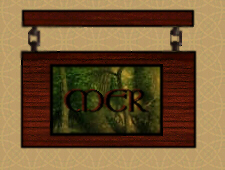
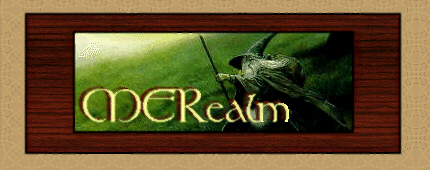
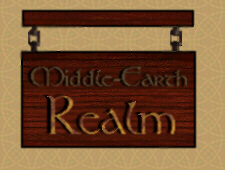
|
|
From 3 rings came the epic story
of love, bravery, and destruction.
The Lord Of The Rings. -Anafdune |
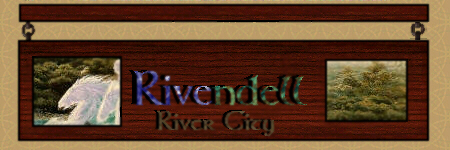

When evening in the Shire
was grey
his footsteps on the Hill were heard;
before the dawn he went away
on journey long without a word.
From Wilderland to Western shore,
from nothern waste to southern hill,
through dragon-lair and hidden door
and darkling woods he walked at will.
With Dwarf and Hobbit, Elves and Men,
with mortal and immortal folk,
with bird on bough and beast in den,
in their own secret tongues he spoke.
A deadly sword, a healing hand,
a back that bent beneath its load;
a trumpet-voice, a burning brand,
a weary pilgrim on the read.
A lord of wisdom throned he sat,
swift in anger, quick to laugh;
an old man in a battered hat
who leaned upon a thorny staff.
He stood upon the bridge alone
and Fire and Shadow both defied;
his staff was broken on the stone,
in Khazad-dum his wisdom died.
And Sam added:
The finest rockets ever seen:
they burst in stars of blue and green,
or after thunder golden showers
came falling like a rain of flowers.
-Frodo's Lament for Gandalf
Middle-earth is an amazing, beautiful and mysterious place but it is also sometimes ugly, terrible and dangerous. There are towering, snow capped- mountains, beneath which run deep, dark, underground passageways. There are tangled, airless forests, where strange creatures lurk in the half-light; and there are woods where the grass beneath the trees is sweet-smelling and studded with small golden flowers, shaped like stars. There are high towered citadels; black, iron-gated strongholds; towns built upon lakes, in trees and under hills; and, away in the east, a land of smoke, fire and sinister shadows.
However, it was in a quiet, green
corner of Middle-earth called the Shire (in the top northwest part of Middle-earth),
that the adventures of Bilbo and Frodo Baggins really began. The Shire
farms and fields and a meandering river, simply called The Water, which
had given its name to sleepy little villages with inns and water-mills
and names such as Bywater and Hobbiton-across-the-Water.
Just above Hoobiton, stood a Hill,
into the side of which was built Bag End, the home of Bilbo Baggins. This
curious, but comfortable, house had a
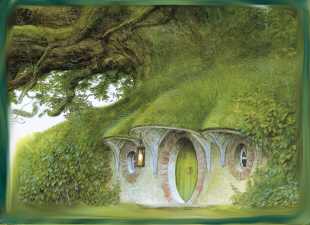 a round door, painted green with a shiny brass knob. Inside was a long
tunnel leading
a round door, painted green with a shiny brass knob. Inside was a long
tunnel leading
to the different rooms, the best
of which had deep-set, round windows that looked out over the garden to
the meadows beyond.
Bilbo, like most of the hobbits
who lived in The Shire, was not very intrested in adventures, which very
he described as 'nasty, disturbing uncomfortable things' that make you
late for dinner! Then, one day Gandalf the wizard arrived with thirteen
dwarves and a map.
Bilbo loves maps and had one hanging
on the wall at Bag End, which showed the surrounding countryside, with
all his favourite walks
marked on it in red ink. But Gandalf's
map was a special one: it had a message written on it in magic runes that
could only be read when held up to the light of the moon. It showed places
Bilbo had never seen or heard of before; distant places beyond the Edge
of the Wild, like the Lonely Mountain (which is at the top of the map marked
with it proper name, Erebor). And in a cave in the mountain, lived a huge
dragon called Smaug, who guarded a great horde of treasure that had once
belonged to the dwarves.
The only dragon anywhere near Bag
End was The Green Dragon Inn at Bywater; and although Bilbo was a little
nervous at the though of meeting a real dragon, he agreed, on the spur
of the moment, to leave his home and help the dwarves to get their treasure
back. It was a long way to the Lonely Mountain and a lot of exciting -
sometimes terrifying - things happened to them on their journey.
They encountered trolls, hungrey
for roast dwarf; mighty stonegiants, hurling rock among the mountain paths;
and savage wolf-like creatures, called Wargs. In the dim, green darkness
of Mirkwood, the trees were hung with dense cobwebs, spun by huge threads.
Having escaped that peril, the travellers were then taken prinsoner by
wood-wlves and held captive in the Elvenking's Hall, carved deep into the
hills beside the Forest River.
Some of the most dangerous journeys
in Middle-earth were those made in the pitch-black, criss-crossing passageways
under the Misty Mountains separating the Western Lands from the perilous
Wilderland, that Bilbo and the dwarves were captured by a horde of goblins,
armed with axes and cruel, bent swords.
It was deep down beneath the goblin
city, beside a cold, black lake, that Bilbo met Gollum, a slimy creature
as dark as darkness except for two big round pale eyes in his thin face.
Here Bilbo accidentally found something that Gollum had lost, something
which the creature called his 'precious'.
It was a ring with the power to
make its wearer invisible.
It was also underground, in the
dungeon-halls built by the dwarves among the roots of the tall, grim Lonely
Mountain, that Bilbo finally encountered Smaug, the huge gem-encrusted
dragon. Although Bilbo's journey led him into many dangerous places, there
were others where he and his companions found peace and safety. There was
the great wooden hall of Beorn, the bearded giant of a man who could change
his shape into that of a bear.
Surrounded by a high thorn-hedge,
Beorn's house had a garden full of bee-hives and flowers than ran up to
the steps of the great hall with it's open fire and tree-trunk pillars
where, by the light of beeswax candles, the weary travellers were given
food and bowls of mead.
And there was Rivendell, the home
of Elrond and the elves. Known as the last Homely House, Rivendell was
set deep withen a fair valley of beech
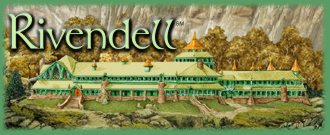 and
oak trees, reached by long, steep, zig zagging paths and finally approached
across a narrow bridge. The air there was filled with the scent of flower
and trees, and the on his journey 'there and back again', it was to Rivendell,
some time after his adventures, that he eventually returned to live. And
it was there that his nephew, Frodo, came when he, too, set off on another
far longer and more dangerous journey. Seventy-seven years had passed and
Frodo was living in Hobbiton, when Gandalf again arrived at Bag End. This
time he had no dwarves with him and no map, but he brought sinister news.
The ring which Bilbo had found was much more than just a magic ring, it
was a ring of great power.
and
oak trees, reached by long, steep, zig zagging paths and finally approached
across a narrow bridge. The air there was filled with the scent of flower
and trees, and the on his journey 'there and back again', it was to Rivendell,
some time after his adventures, that he eventually returned to live. And
it was there that his nephew, Frodo, came when he, too, set off on another
far longer and more dangerous journey. Seventy-seven years had passed and
Frodo was living in Hobbiton, when Gandalf again arrived at Bag End. This
time he had no dwarves with him and no map, but he brought sinister news.
The ring which Bilbo had found was much more than just a magic ring, it
was a ring of great power.
Sauron, the Dark Lord, had forged
it, many years before, in the fire of Mount Doom in the land of Mordor.
The ring was made to control other rings given to the peoples of Middle-earth,
but it had long been hidden from the dark gaze of Sauron's eye. Now, however,
he knew that the One Ring was no longer lost and he was seeking to find
it and use it once more.
Without knowing what lay ahead,
Frodo agreed to take the ring out of The Shire; and accompanied by his
cousins, Merry and Pippin, and his gardener, Sam Gamgee, he set out upon
the same road that his uncle had taken at the start of his adventure...
Danger
soon pursued them on the open road in the shape of Ringwraiths, nine black
servants of the Dark Lord, riding first on horses, then on great flying
beasts with leathery wings. But they met with other, unexpected, dangers:
in the Old Forest, on the bank of a cool river, a strange drowsiness crept
over the travellers and they found themselves caught and trapped in the
crackled bark and tangled roots of an ancient tree, Old Man Willow. And,
on the Barrow Downs, they encountered a ghostly BArrow-wight, lurking in
an old burial mound among hills where standing stones loomed up like jagged
teeth out of a sea of fog.
Any journey through Middle-earth
was affected not just by weather - fog and mist, wind and rain, blizzards
and thunderstorms, and great extremes of heat and cold - but also by the
terrain, which presented it own obstacles and dangers; marsh, mire and
mud, river, lake and rapid; and vast, unscalable mountain ranges.
One of these ranges, the Misty Mountain,
had presented an impassable barrier to bilbo and the dwarves. Later, this
great rocky backbone of Middle-earth proved similarly hazardous for Frodo
and his companions. Snow on the high passes drove them back and forced
them to take a darker route underground, through the twisting, turning
tunnels of Moria, the old dwarf mines deep beneath the mountains.
Such subterranean routes demanded
great courage of those who took them, whether through the maze-like Mines
of Moria to the fateful Bridges of Khazad-dum; the stinking, cobwebbed
passageways that formed the lair of the monstrous spider, Shelob; or the
ghost-inhabited Paths of the Dead that ran beneath the Haunted Mountain.
And across every road in Middle-earth fell the fearfu; shadow of far off
Mount Doom.
Over hill and under ground ran thier
way, across open prairie land and along shady pathways through woods and
forests that were to play as important a part in the adventures of Frodo
and his companions as they had in those of Bilbo. In the beautiful woodland
kingdom of Lothlorien. They found a timeless land of cool breezes and sweet
scents, where elves lived on platforms or flets, in the branchs of tall
mallorn trees heavy with golden blossoms. And, in the heart of Lothlorien,
they visited Caras Gladhon, the City of Trees, where, under a shadowy cloud
of leaves, high among the huge limbs of one of the mightiest trees in Middle-earth,
they met Lord Celebornand Lady Galadriel. It was not Frodo, but Merry and
Pippin who found themselves in a very different woodland: a place where
the trees gleamed with soft greens, rich browns and smooth black-greys.
This was Fangorn, a huge forest of lichen-hung trees where the young hobbits
met Treebeard the Ent, a towering troll-like figure, fouteen feet high,
with skin like grey-green bark and a bushy beard of twig and moss.
Both Lothlorien and Fangorn were
safe-havens from the terrors of Sauron's dark powers, as were Rivendell
and the House of Tom Bombadil, on the edge of the Old Forest.Here the weary
hobbits feasted on white bread and butten, cream and honeycomb, cheese
and ripe berries in a long, low room filled with candles and hanging lamps,
and wide lily-bowls amongst which sat Tom's wife, the beatiful Goldberry,
River King's daughter.
Tim Bombadil was master of wood,
water and hill, and no evil could approach his house. Other places, with
no such protection, require a different form of defence. Many, like Golden
Hall of King Theoden, Lord of the Horsemen of Rohan, stood upon a solitary
foothill of the White Mountains ringed with a deep dike and a mighty wall
topped by a thorny fence.
To the north-west of Edoras, stood
the hill-fort of Helm's Deep. With it twenty-foot high stone walls and
its lofty tower, the Hornburg, it had been built upon a great spur of rock,
jutting out from the surrounding cliffs. Despite being attacked by a swarming
army of Sauron's Orcs, Helm's Deep was held and great deeds of heroism
were done in the battle.
To the south stoof Minas Tirith,
the white-walled, many-towered citadel of Gondor. Built upon a hill joined
to Mount Mindolluin, Minas Tirith was ringed by seven strong walls, the
topmost of which ran out onton a great stone outcrop, its sharp edges rising,
in a high sweeping curve, seven hundred feet above the city gates. Besieged
by Sauron's forces with catapults, siege-towers and battering rams, the
Great Gates were broken down, but Minas Tirith did not fall and the armies
of the west, though heavily outnumbered fought the Battle of the Pelennor
Fields and were victorious.
In stark contrast to these halls
and cities of the free people, were the great bastions of darkness: Orthanc,
Saruman's stronghold at Isengard, a gleaming black tooth of rock, ringed
with stone and built agaist the last peak of the Msity Mountains; and Barad-dur,
the immeasurable strong fortress of the Dark Lord, with battlement upon
battlement of black stone and a steel gate through which none who went
in, ever came out.
These then are some of the many extraordinary places to which Bilbo and Frodo travelled during their journeys through Middle-earth. When Frodo first set out from The Shire with his companions on there great adventure he quoted a song made up by Bilbo, many years before
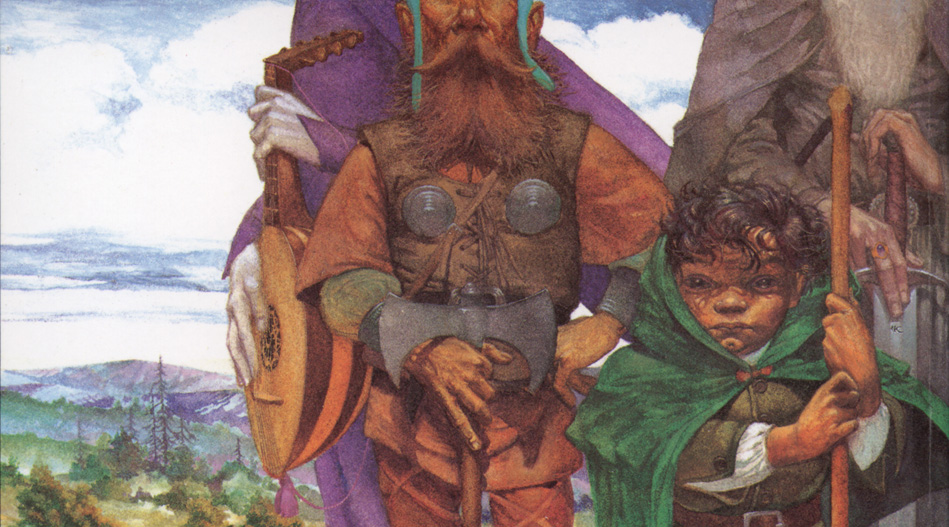
![]()
![]()
Copyright 1999 MERealm Productions.
All Rights Reserved.